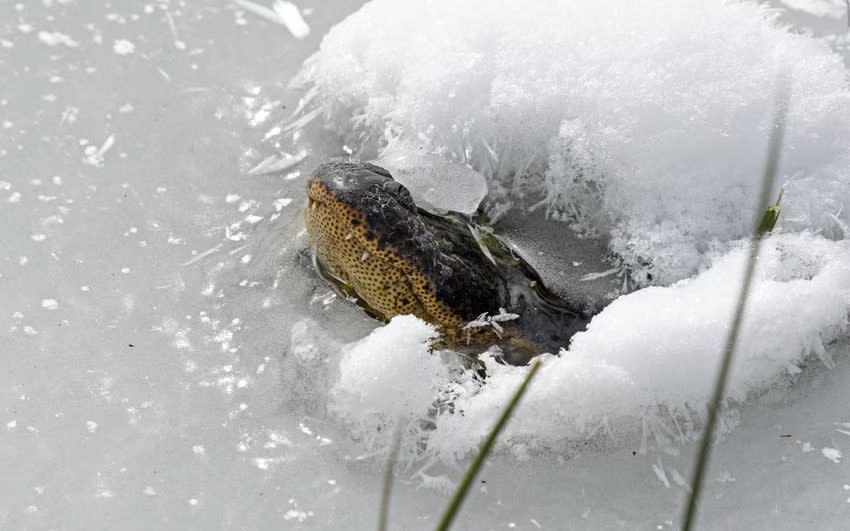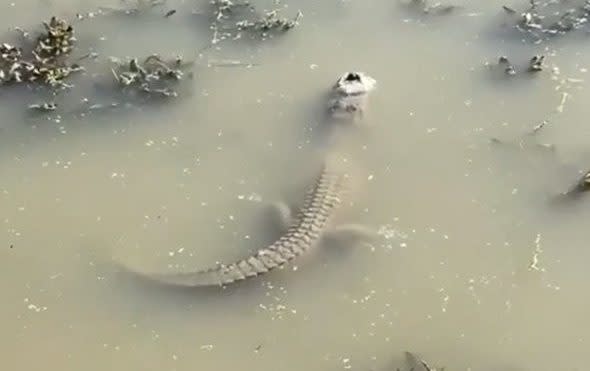Alligators freeze themselves in solid ice to survive US cold snap

Alligators are allowing themselves to freeze solid in icy ponds and swamps to survive an unexpected cold snap in the American South.
The creatures were spotted submerged in ice with only their snouts poking out to breathe as temperatures fell as low as -10C across Texas and North Carolina.
The phenomenon has been put down to the brumation – a process similar to hibernation in mammals – that reptiles undergo to survive the cold.
One staff member from The Swamp Park in North Carolina said as the water freezes, the alligators “instinctively tilt their nose up, to the point where it’s out of the water, so they don’t just suffocate”.
He added: “Think of it as a cute little danger snorkel.”
The Swamp Park, which cares for rescued alligators, posted a video showing one of the reptiles starting to thaw out as the ice surrounding it cracks.
The retreat is roughly four miles from the Atlantic Ocean, close to the northern limit of the American alligator’s range in the wild.
Footage of the “gatorcicles”, as some enthusiasts dubbed them, shows the alligators squeezing their eyes shut against the cold as they lie suspended in the ice.

An expert from Gator Country park in Beaumont, Texas said an alligator’s heart rate plummets to almost undetectable levels when frozen.
Gesturing at the body of the alligator, he said: “Most importantly, look at its snout. It has pushed its snout up through so it can get oxygen.
“That animal is in full hibernation right there. His heart’s beating at three beats per minute… That’s how alligators survive in the ice.”
Like all reptiles, alligators are cold-blooded and unable to generate their own heat, meaning they must rely on the environment to warm up.
An arctic blast has brought icy winds and heavy snow to much of the US over the course of this week, leaving wildlife struggling to survive.
Elsewhere in North Carolina, researchers rescued 109 cold-stunned turtles on a beach this week in an effort to save them from freezing temperatures.
Just 36 of the creatures taken to an aquarium and rehabilitation centre survived, according to the N.C. State University Centre for Marine Sciences and Technology.

